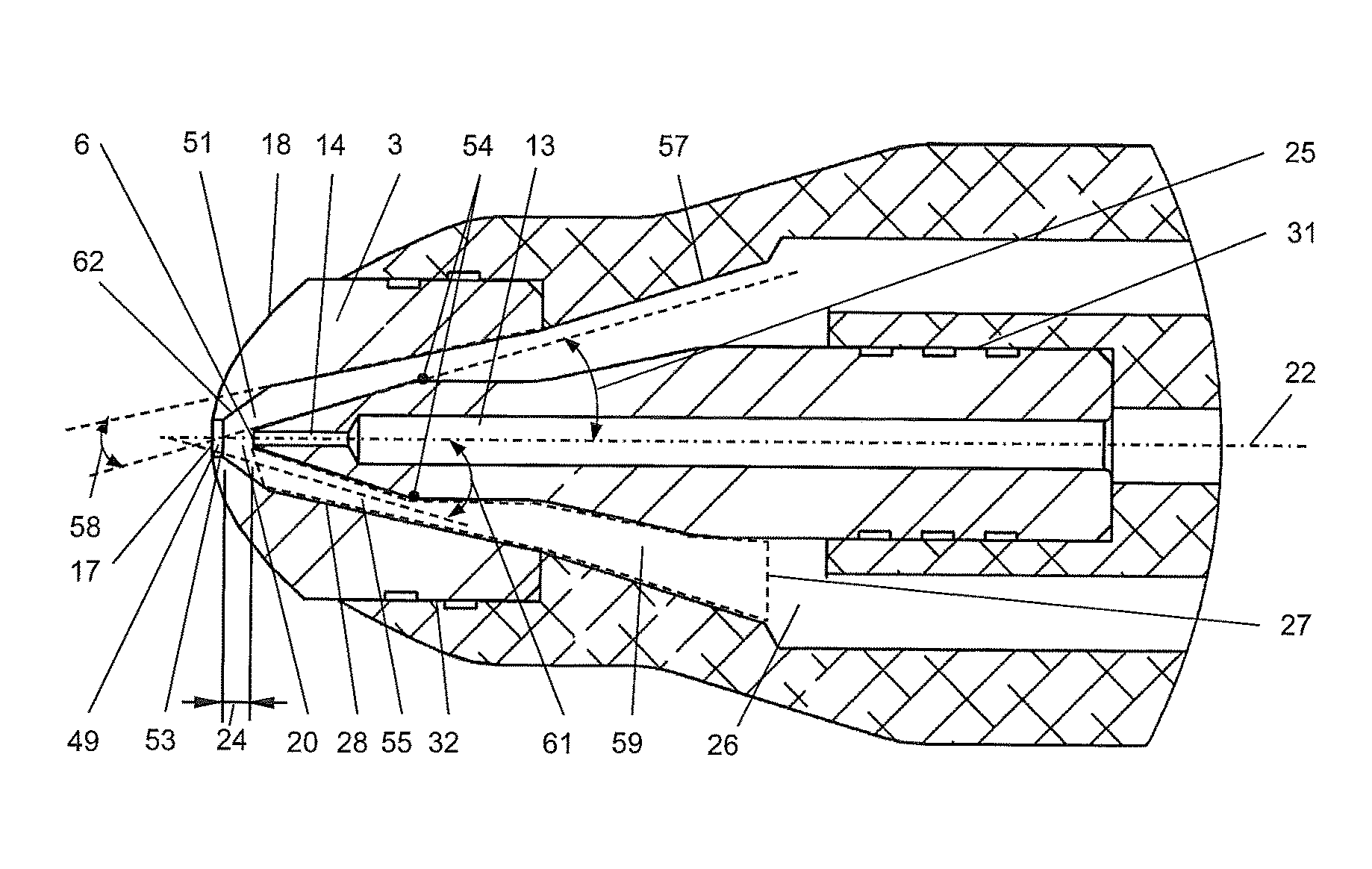Aerosolizing nozzle and method of operating such aerosolizing nozzle
a technology of aerosolization nozzle and nozzle, which is applied in the direction of spray nozzle, medical devices, other medical devices, etc., can solve the problems of high concentration of fine particle respirable aerosol, high difficulty in solution containing solutes, compounds and or liposomes, etc., and achieve low surface tension, high aerosolization rate, and high viscosity
- Summary
- Abstract
- Description
- Claims
- Application Information
AI Technical Summary
Benefits of technology
Problems solved by technology
Method used
Image
Examples
examples
[0073]To evaluate the nature of a remarkable decrease in particle size with increasing aerosol exit orifice diameter 21, a series of photographs of aerosol plumes generated by these nozzles were taken while generating aerosols of water. Exemplary aerosol exit orifice diameter 21 variations are shown in FIGS. 11A and 11B with an aerosol exit orifice diameter 21 of 300 μm; FIGS. 12A and 12B with an aerosol exit orifice diameter 21 of 700 μm, and FIG. 13 with an aerosol exit orifice diameter 21 of 1200 μm. The fluid exit orifice diameter 23 in all cases was 250 μm and the distance 24 between the fluid exit orifice 6 and the entrance 53 to the aerosol exit channel 49, i.e. the length as the aerosolizing space 20 was 500 to 520 μm and the aerosol exit channel length 30 was 180-220 μm in all examples shown in FIGS. 11-13. The transformation of the nature of aerosol formation and emission from the nozzles is illustrated in FIG. 11A-B by comparing the plume formed outside a 300 μm diameter ...
PUM
 Login to View More
Login to View More Abstract
Description
Claims
Application Information
 Login to View More
Login to View More - R&D
- Intellectual Property
- Life Sciences
- Materials
- Tech Scout
- Unparalleled Data Quality
- Higher Quality Content
- 60% Fewer Hallucinations
Browse by: Latest US Patents, China's latest patents, Technical Efficacy Thesaurus, Application Domain, Technology Topic, Popular Technical Reports.
© 2025 PatSnap. All rights reserved.Legal|Privacy policy|Modern Slavery Act Transparency Statement|Sitemap|About US| Contact US: help@patsnap.com



